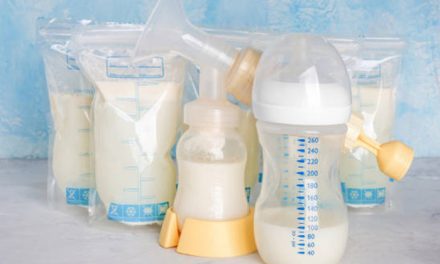Breastfeeding is stressful for new mothers, especially when they worry about how to increase breast milk. We know how unsettling it is when one thinks of not being able to feed your baby sufficiently.
You go through so many physical and mental changes that some uncalled thoughts sweep in naturally. Do I have sufficient milk produced for my little one? Is my baby full yet? How can I increase my milk supply?
Here’s everything you need to know about how to increase breast milk. From the reasons for low milk supply to tips on boosting your milk supply, we have all the questions answered.
How To Increase Breast Milk?
Start breastfeeding as early as possible
Ideally, you can breastfeed your child within an hour of giving birth. However, it could be a challenge if you are recovering from a C-section or other medical conditions post-birth. You should ensure you start as early as possible.
Also read: Common Breastfeeding Concerns Answered
Maintain the frequency
You must feed the infant at least eight to twelve times a day. Moreover, maintaining an appropriate frequency of breastfeeding helps you regulate the supply. The more you breastfeed, the more the milk supply.
Use a breast pump/how to increase breast milk
If you notice that the baby isn’t feeding often throughout the day, use a breast pump to store your milk. Lactation experts suggest pumping regularly for improved milk supply. For this reason, it is ideal to pump for 15 minutes every 2-3 hours for working mothers.
See if your baby latches properly
It is crucial for the baby to latch on properly and swallow well. In case your baby isn’t gulping the milk well due to incorrect latching, you might produce less milk.
Also read: Breastfeeding Positions
Feed from both breasts
Switch between breasts from time to time. You must drain both to maintain breast milk production. Also, milk build-up causes breast infections like mastitis. So, if you are working or the baby isn’t sucking on readily, use a breast pump to drain built-up milk.
Talk to a lactation expert on how to increase breast milk
It is always good to have second opinions or expert advice. Therefore, you can reach out to a lactation consultant to learn more about how to increase breast milk.
Consult your doctor
If nothing works or you are still concerned about your milk supply, talk to your doctor if your medication could be a reason for the low milk supply. Certain medications reduce breast milk production.
Is My Baby Getting Enough Milk?
To understand this, it is essential to know the signs your baby is getting enough milk (or when they are not getting enough milk).
Signs your baby is satiated:
- Regular pooping and peeing
- Colorless urine (well-hydrated)
- Proper gulping and swallowing while feeding
- Content after feedings
- Gaining weight
Signs your baby might not be full:
- Slow weight gain: Losing 5-7% of birth weight during the first few days is normal for infants. Some even lose up to 10%! But they should gain a minimum of 20-30g per day afterwards. By 10 to 14 days of their birth, your baby should get back to its birth weight. If your little one loses more than 10% of their birth weight or fails to gain weight, seek medical assistance.
- Fewer wet/dirty nappies: The number of times your infant pees and poops is a significant indicator of their total milk intake in a day. So, ensure you see a good amount of dirty nappies every day.
- Dehydration: If you notice dark-colored urine, a dry mouth or lethargy, your baby could be dehydrated.
Note: These reasons may or may not confirm a low milk supply. Nevertheless, the tips on how to increase breast milk can come to help before seeking medical assistance.
What Are The Causes Of Low Breast Milk?
Few medical conditions could result in a low milk supply in new mothers. Some of which include:
- Excessive bleeding during childbirth
- Case of breast surgery or trauma
- Using nipple shields
- Mammary hypoplasia (insufficient mammary glands in the breast tissue)
- Hormonal imbalance/low prolactin
- Consumption of alcohol
- Smoking
Some foods help to increase breast milk, such as almonds, apricots, coconut, carrots, sesame, millet, oats, barley, dairy products, salmon, and more. Such foods are called galactagogues.
In A Nutshell
As a new mother, having concerns about how to increase breast milk is inevitable. But, you can always find ways to address the issue of low milk supply. If not by the tips mentioned above or eating breast milk-boosting foods, your lactation consultant can come to your rescue.
However, you must ensure to sleep better, stress less, and stay hydrated to maintain a healthy milk supply for your little one.






